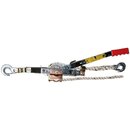dumpsterDiver
Banned
- Messages
- 9,003
- Reaction score
- 4,656
- # of dives
- 2500 - 4999
For this type of diving I would recommend a Sherwood Magnum. They are inexpensive, bullet-proof and the first stage has a dry seal. Depending on the weight of the instruments you should also invest in a lift bag. A diver should not clip heavy items to herself. A light may also be helpful as long as you don't kick up too much debris.
Me too. I used that first stage for nasty golf ball diving and it worked forever. Totally sealed from fine mud and grit and works fine.





